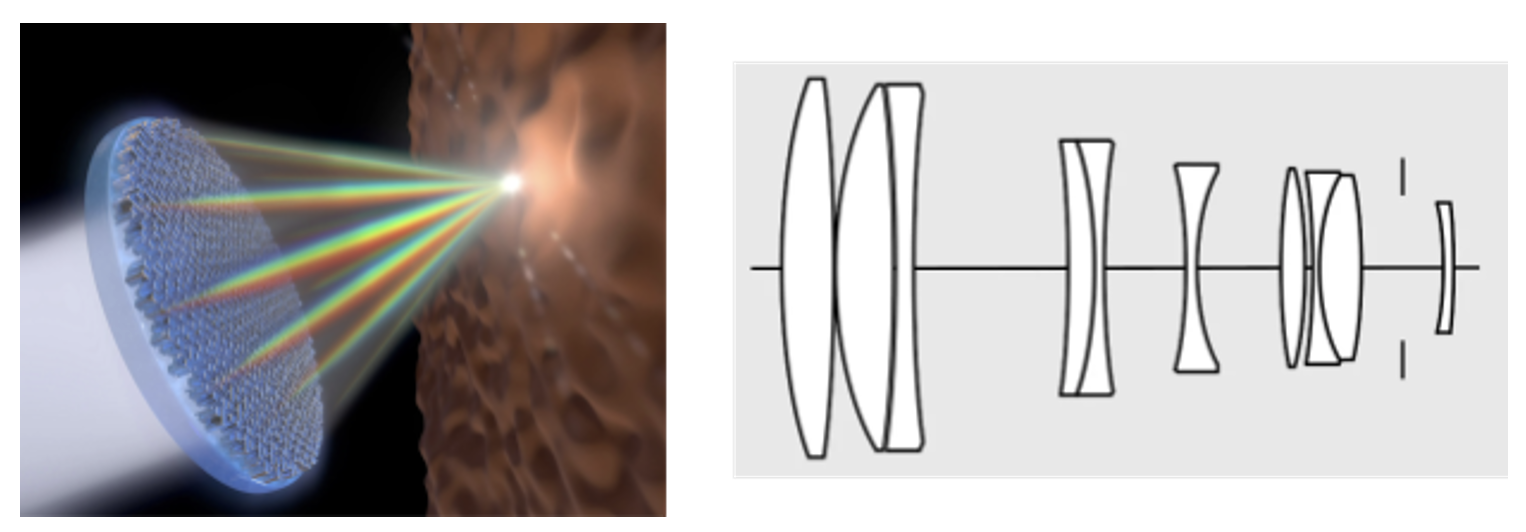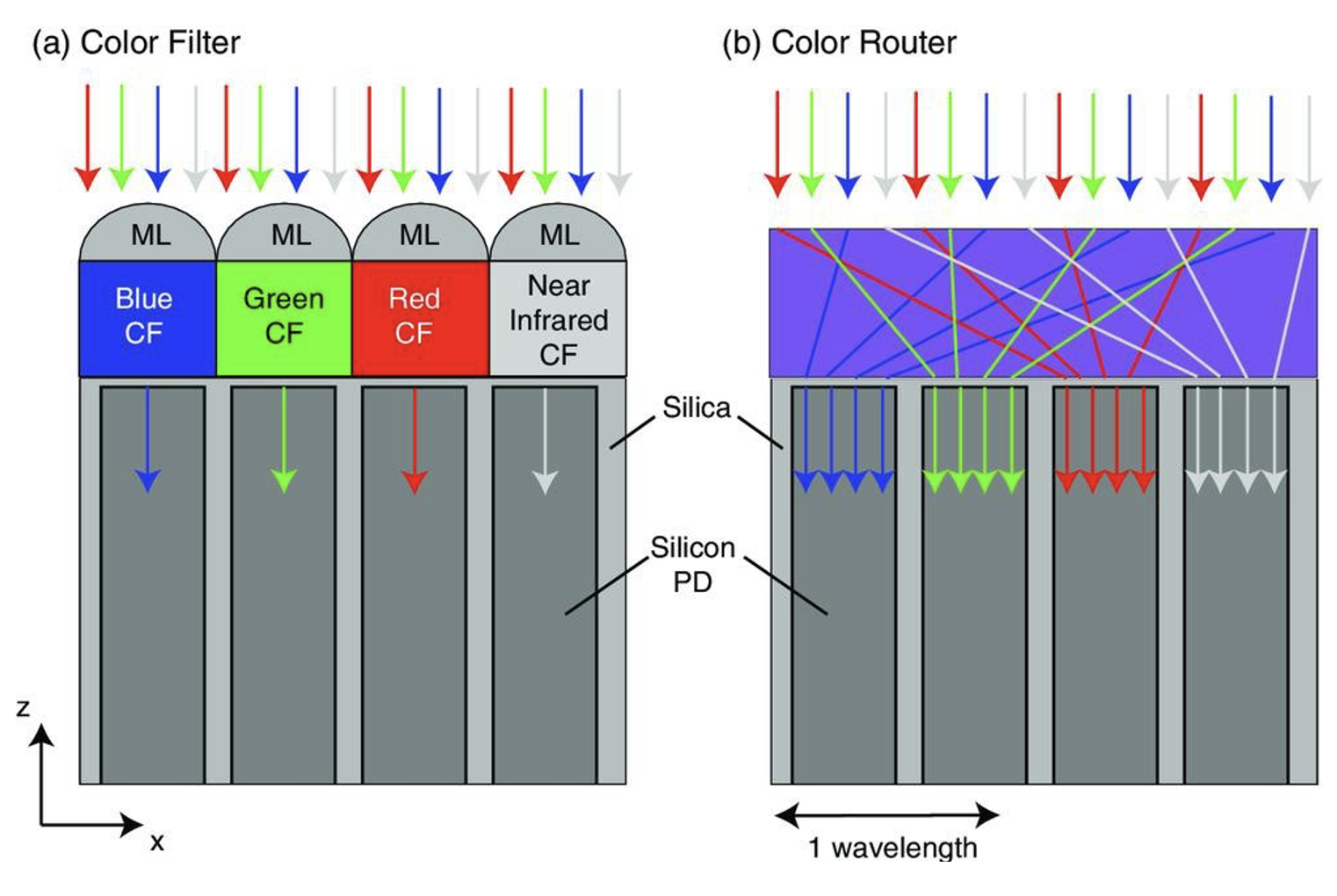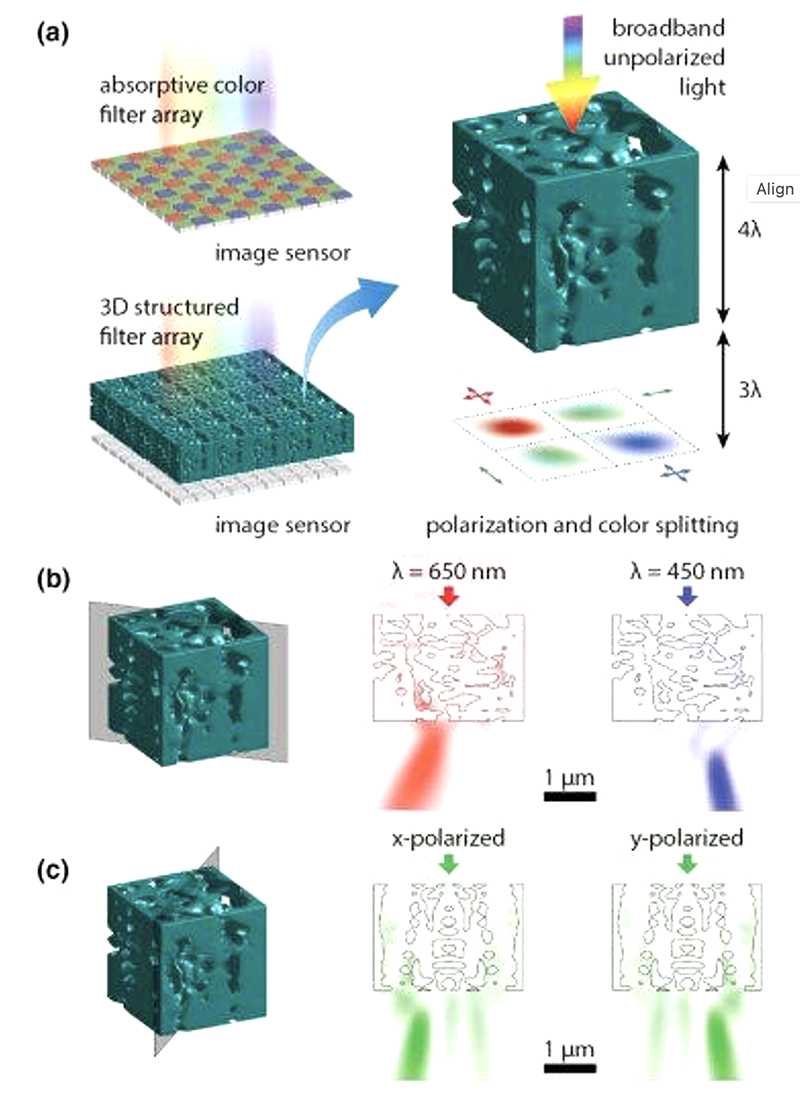
Projects
Inverse Photonic Design
PI: Andrei Faraon (Division of Engineering and Applied Science)
SASE: Nia McNichols, Scholar
Conventional diffractive optical components such as lenses, wave plates, or filters have long been the standard for any optical applications. The functionality of such components relies on refraction: Light propagates through media of particular refractive indices in order to alter the path of light and achieve desired results. In recent years, the use of metasurfaces – artificial 2D materials with sub-wavelength thickness – has drastically changed the trajectory of the field. The sub-wavelength scale of metasurfaces allows for the modification of incident waves via specific boundary conditions rather than relying on the propagation of light. As a result, these materials can possess complex behavior at a fraction of the size of conventional elements. The sub-wavelength scale allows metasurfaces to alter the electric and magnetic field components of light independently, allowing complete control of phase, amplitude, polarization, and impedance response across multiple wavelengths. Moreover, metasurfaces are highly tunable and can be engineered to produce desired behavior. These key advantages over traditional optical components have ushered in a new era of optics and spawned a new subfield called “metasurface optics” or “metaoptics”.

Photo description: (Left) A metalens developed by a team at Harvard SEAS capable of focusing white light to a single point, eliminating chromatic aberration. Image courtesy of Jared Sisler/Harvard SEAS (Right) A typical compound lens found in modern cameras, which uses multiple, bulky lenses to focus light. A single metalens is capable of doing the same at a fraction of the size and weight. Image courtesy of Paul Chin.
The Faraon Group at Caltech is conducting research into quantum and nanoscale optics. The metasurfaces subgroup has a particular interest in designing 3D metasurfaces which have more degrees of freedom than their 2D counterparts and allow more complex behavior. The group has collaborated with SONY to develop a surface capable of simultaneous color and polarization sorting of light. Traditionally in image sensors, a Bayer filter is placed in between the lens and the focal plane to separate the light into RGB channels. These filters work by absorbing all light except for a specific color which has the unfortunate side effect of decreasing the overall transmission and thus the power received at the sensor. The color router developed with SONY instead redirects light based on its wavelength with minimal transmission loss. The color router also sorts the green light according to polarization. Having both behaviors in a single optical device is only possible due to the 3D structure.

Photo description: (a) Diagram of a typical color filter (CF) setup (ML = microlens). (b) Diagram of a color router setup. Image Courtesy of Zhao et al. Adv. Photonics. Res. (2021).
The Schmidt Academy collaborated with the Faraon Group to develop user-friendly software for designing meta-optical devices, including the SONY color router. Although a collection of scripts existed for the SONY project, there was a need for better software practices to meet the expectations of SONY. A new software package was developed, titled “vipdopt”, streamlining the inverse design process for creating new photonic devices. This package is completely modular and configurable allowing for ease of use and development. This package also serves as a generic tool for any photonic inverse design, with potential to be used beyond the singular project. Furthermore, thanks to this collaboration, the Faraon Group now has a GitHub organization serving as a common home to software used in the lab, and the group better understands and follows of best software practices.
Vipdopt GitHub repository: https://github.com/Faraon-Lab/vidpopt
Vipdopt documentation: https://vidpopt.readthedocs.io/en/latest/

Photo description: (a) A 3D structured color router that also splits the green light by polarization. (b) A cross section demonstrating the path that red and blue light take through the material. (c) A cross section demonstrating the path that x-and-y-polarized green light takes through the material. Image courtesy of Camayd-Muñoz et al. Optica (2019).